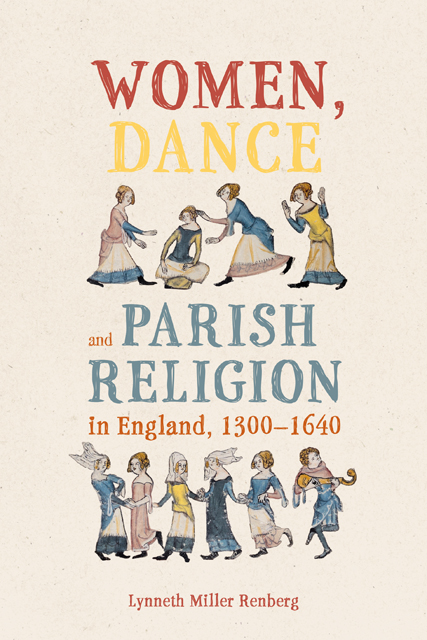Book contents
- Frontmatter
- Dedication
- Contents
- Acknowledgments
- List of Abbreviations
- Introduction
- 1 Reforming and Redefining True Religion
- 2 Dance and Protecting Sacred Space
- 3 Dance and Disrupting Sacred Time
- 4 “Satan Danced in the Person of the Damsel”
- 5 “In Her Dance She Had No Regard Unto God”
- 6 Performing Dance, Sin, and Gender
- Conclusions
- Appendix
- Timeline
- Bibliography
- Index
- Gender in the Middle Ages
5 - “In Her Dance She Had No Regard Unto God”
Published online by Cambridge University Press: 17 December 2022
- Frontmatter
- Dedication
- Contents
- Acknowledgments
- List of Abbreviations
- Introduction
- 1 Reforming and Redefining True Religion
- 2 Dance and Protecting Sacred Space
- 3 Dance and Disrupting Sacred Time
- 4 “Satan Danced in the Person of the Damsel”
- 5 “In Her Dance She Had No Regard Unto God”
- 6 Performing Dance, Sin, and Gender
- Conclusions
- Appendix
- Timeline
- Bibliography
- Index
- Gender in the Middle Ages
Summary
In John Lowin’s 1609 pamphlet Brief Conclusions of Dancers and Dancing, Salome made several appearances: first, as an example of performing an “unlawfull” or “prophane” dance, and later on as the ultimate reason why Christians should forgo all dances. In the conclusion of his pamphlet, Lowin wrote that “mee thinketh it were enough, to make us leave and forsake the usage of such Dances … to observe and consider with studius diligence … how that through the meanes and occasion of a Dance St. John Baptist was put to death.” Lowin’s order to his audience, to think on how dance led to the death of a saint and thus to stop all dancing, stands in stark contrast with the celebration of St. John’s Day with parish dances in the fourteenth and fifteenth centuries. Sermons and commentaries from sixteenth- and seventeenth-century England consistently present Salome as Lowin portrayed her: as a transgressive woman, with emphasis placed on the sinfulness of her dance and its sexual nature. By the time Lowin wrote in 1609, no sign of Salome as a positive allegory appeared.
One reason for the disappearance of more positive patristic and medieval perspectives on Salome relates to changes in biblical exegesis brought about by the influence of the Reformations. However, these exegetical changes are not the sole cause behind the vanishing of these views of Salome. An altered vision of worship, combined with a new emphasis on orderliness as a sign of morality, also contributed to the changes in Salome’s presentation. Yet these changes only furthered the already evolving attitudes to Salome and to dance revealed in late medieval glosses and sermons. As the previous chapter showed, the real shift came in the solidification of the transition begun in the medieval sermons: from a focus on dance as a sin of sacrilegious action to a focus on dance as a sin of sexualized bodies.
This chapter follows these shifts to their end point, exploring the ways in which Salome’s evolving presentation became used to condemn all dancers and all women. As shown in the previous chapter, Salome’s transformation began in the Middle Ages, as authors connected her dance first to sacrilege and then to sex. The dance of Salome transformed from an allegory for the true church to the act of a literal demon-possessed woman.
- Type
- Chapter
- Information
- Women, Dance and Parish Religion in England, 1300-1640Negotiating the Steps of Faith, pp. 131 - 156Publisher: Boydell & BrewerPrint publication year: 2022



